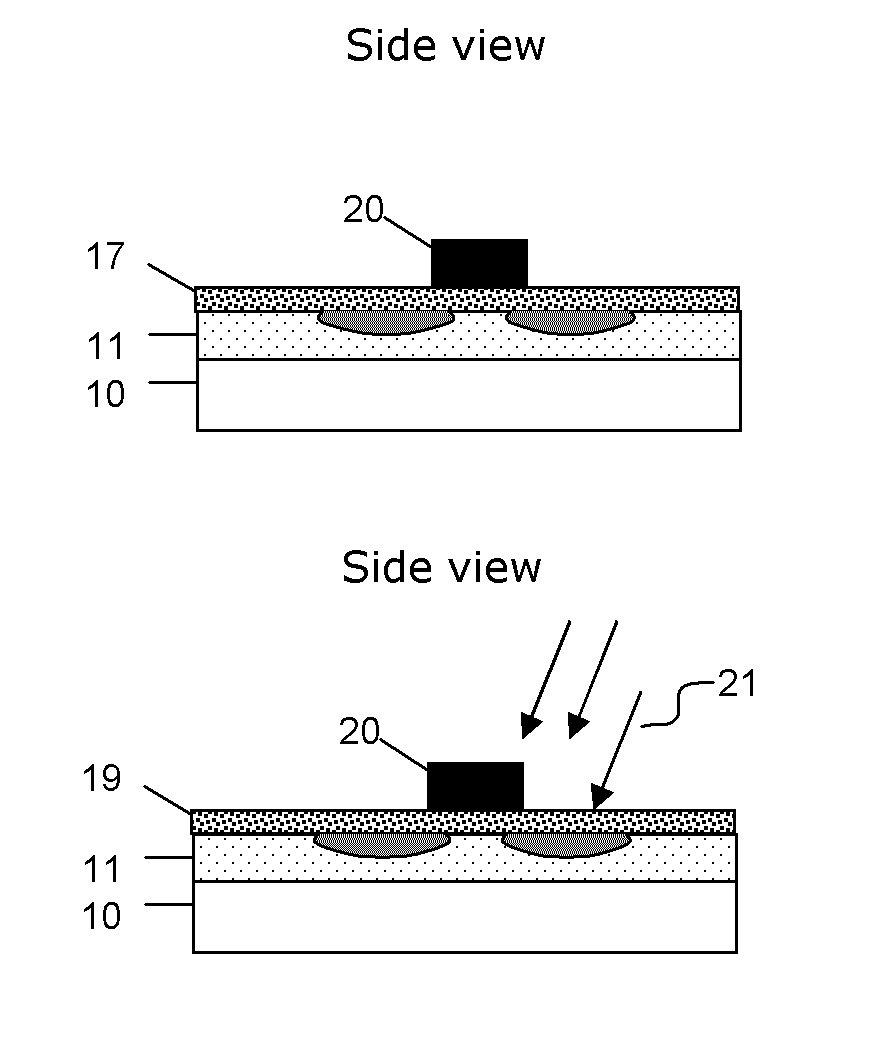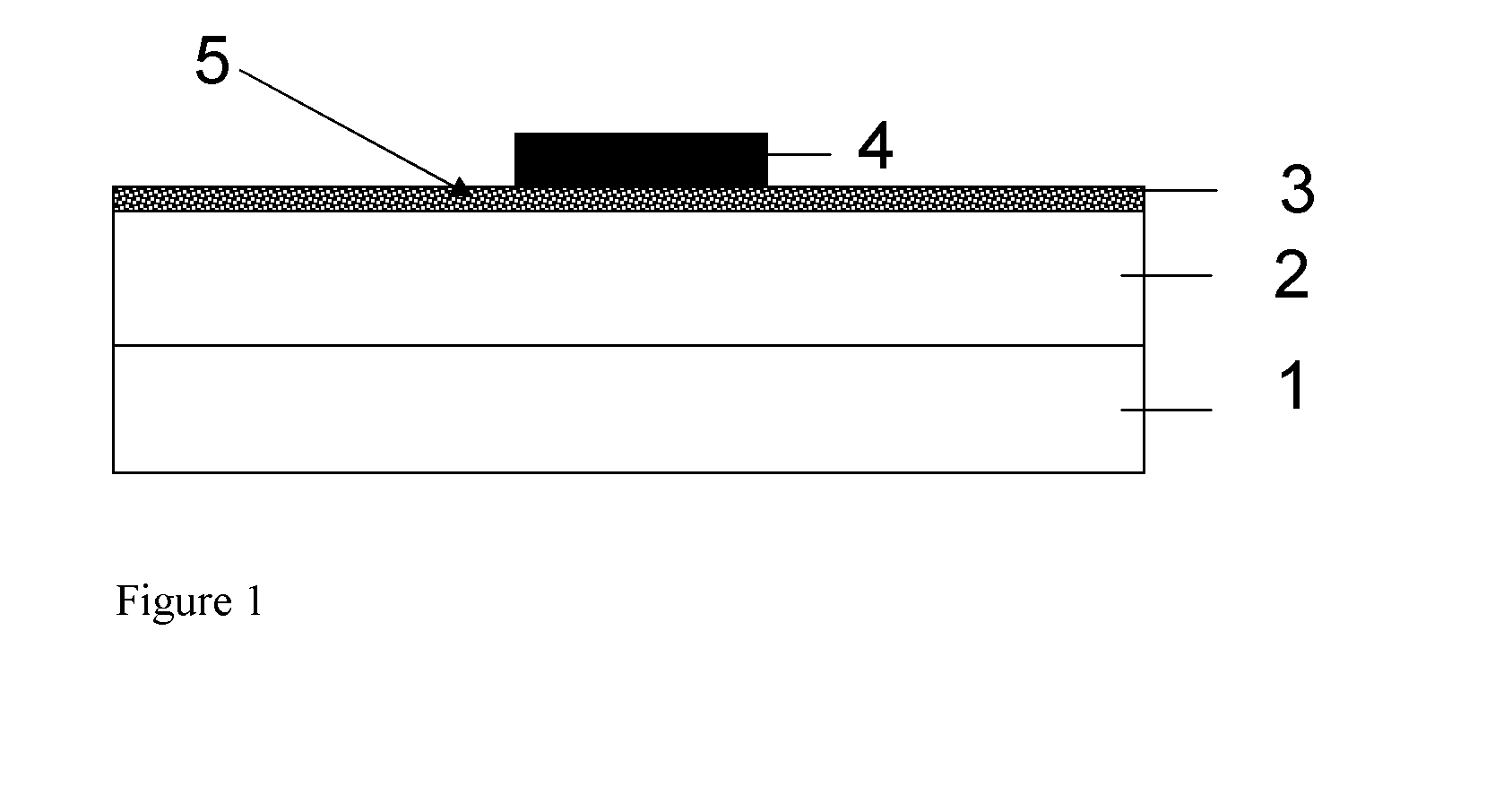Method for reducing Fermi-Level-Pinning in a non-silicon channel MOS device
a non-silicon channel mos and level pinning technology, applied in the direction of basic electric elements, semiconductor devices, electrical apparatus, etc., can solve the problems of reducing the iii-v compound cmos device development rate, reducing the development speed of the iii-v compound cmos device, and reducing the ipl. the effect of reducing the level pinning
- Summary
- Abstract
- Description
- Claims
- Application Information
AI Technical Summary
Benefits of technology
Problems solved by technology
Method used
Image
Examples
example 1
The Proof of a Field-Induced Surface Quantum Well at the Gate Oxide-InGaAs Interface
[0155]The measured inversion capacitance due to minority carrier response (generation-recombination or diffusion) becomes independent of gate bias as soon as the gate bias moves past the CV Dit bump. This behavior is illustrated in the measured CV traces (from 1 KHz to 1 MHz) plotted in FIG. 6 for a high mobility p-type In0.53Ga0.47As MOS capacitor. The gate bias independence is the signature of true MOS capacitor inversion behavior. Equivalent MOS capacitor inversion circuits are shown in FIG. 7 explaining the inversion CV traces seen in FIG. 6. FIG. 6 illustrates CV traces of a p-type In0.53Ga0.47As MOS capacitor illustrating true inversion response. A bias independent characteristic at inversion has to be noticed. The MOS capacitor was measured from 1 KHz to 1 MHz, with a total of 30 frequencies.
[0156]At weak inversion, the minority carriers attracted to the InGaAs surface form finite inversion ca...
example 2
The Proof of Field-Induced Surface Quantum Well at the Sate Oxide-Ge Interface
[0159]For FIG. 10 illustrates CV traces at room temperature of an n-type high mobility Ge MOS capacitor before (FIG. 10A) and after (FIG. 10B) performing the catalytic FGA according to preferred embodiments of the preferred embodiments illustrating true inversion response. The MOS-Cap stack used is an n-type doped Ge substrate with 1 nm GeOx top surface layer, a 10 nm thick MBE deposited Al2O3 gate dielectric and a Pt (Pd) gate electrode on top of the gate dielectric.
[0160]A bias independent characteristic at inversion has to be noticed. The MOS capacitor was measured from 100 KHz to 1 MHz, with a total of 30 frequencies. The CV graph in FIG. 10A performed on the nGe / Al2O3 MOS CAP before C-FGA illustrates poor inversion due to high Dit (Dit peak>E12 which is well known as a “V” shape Dit). The CV graph in FIG. 10B performed on the nGe / Al2O3 MOS CAP after C-FGA illustrates very good inversion, low dispersio...
example 3
Measurements Showing Duality of the Ge / InGaAs MOSCAPs
[0162]FIG. 13 compares side by side the n and p type C-V traces of the Ge and InGaAs MOSCAPs at room temperature. FIG. 13 illustrates a p-type Ge MOSCAP (FIG. 13A), an n-type Ge MOSCAP (FIG. 13B), an InGaAs n-type MOSCAP (FIG. 13C) and an InGaAs n-type MOSCAP (FIG. 13D). The duality between the Ge and InGaAs MOSCAPs is clearly visible through the mirror-image like C-V pairs. Low frequency dispersion and very small flat-band voltage shifts observed on the C-V accumulation sides of FIGS. 13(A) and 13(C) point to free-moving Fermi-levels and relatively low Dit.
[0163]FIG. 11 shows the mirror-image like Dit(E) distributions of the Ge and the InGaAs MOSCAPs under the CGS approach. The Dit(E) is deduced from the measured G-V data via the conductance method and the charge trapping characteristics. Relatively low Dit levels near the Ge valence band and the In0.53G0.47As conduction band edges warrant high drive current and excellent mobilit...
PUM
 Login to View More
Login to View More Abstract
Description
Claims
Application Information
 Login to View More
Login to View More - R&D
- Intellectual Property
- Life Sciences
- Materials
- Tech Scout
- Unparalleled Data Quality
- Higher Quality Content
- 60% Fewer Hallucinations
Browse by: Latest US Patents, China's latest patents, Technical Efficacy Thesaurus, Application Domain, Technology Topic, Popular Technical Reports.
© 2025 PatSnap. All rights reserved.Legal|Privacy policy|Modern Slavery Act Transparency Statement|Sitemap|About US| Contact US: help@patsnap.com



